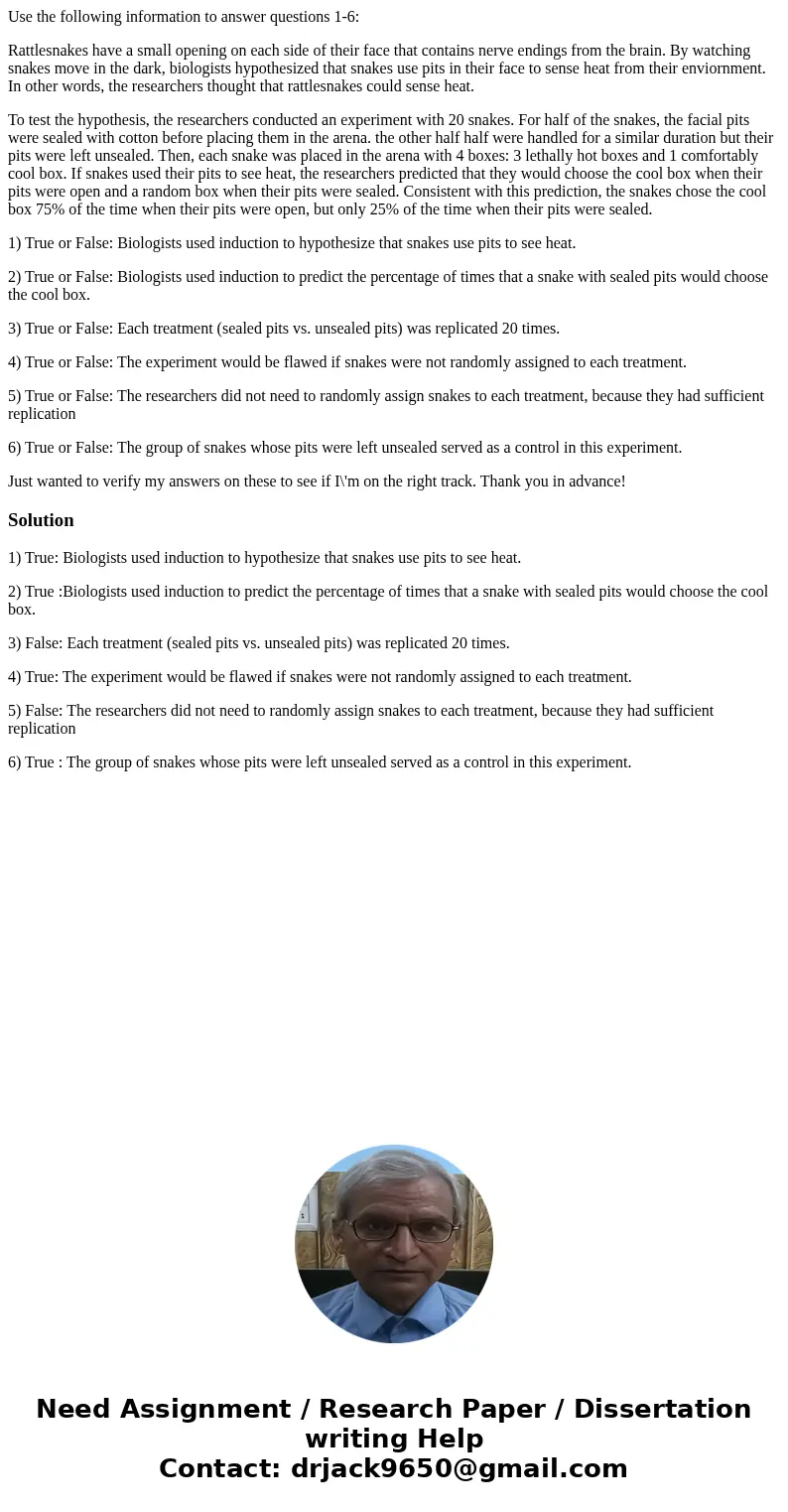Use the following information to answer questions 16 Rattles
Use the following information to answer questions 1-6:
Rattlesnakes have a small opening on each side of their face that contains nerve endings from the brain. By watching snakes move in the dark, biologists hypothesized that snakes use pits in their face to sense heat from their enviornment. In other words, the researchers thought that rattlesnakes could sense heat.
To test the hypothesis, the researchers conducted an experiment with 20 snakes. For half of the snakes, the facial pits were sealed with cotton before placing them in the arena. the other half half were handled for a similar duration but their pits were left unsealed. Then, each snake was placed in the arena with 4 boxes: 3 lethally hot boxes and 1 comfortably cool box. If snakes used their pits to see heat, the researchers predicted that they would choose the cool box when their pits were open and a random box when their pits were sealed. Consistent with this prediction, the snakes chose the cool box 75% of the time when their pits were open, but only 25% of the time when their pits were sealed.
1) True or False: Biologists used induction to hypothesize that snakes use pits to see heat.
2) True or False: Biologists used induction to predict the percentage of times that a snake with sealed pits would choose the cool box.
3) True or False: Each treatment (sealed pits vs. unsealed pits) was replicated 20 times.
4) True or False: The experiment would be flawed if snakes were not randomly assigned to each treatment.
5) True or False: The researchers did not need to randomly assign snakes to each treatment, because they had sufficient replication
6) True or False: The group of snakes whose pits were left unsealed served as a control in this experiment.
Just wanted to verify my answers on these to see if I\'m on the right track. Thank you in advance!
Solution
1) True: Biologists used induction to hypothesize that snakes use pits to see heat.
2) True :Biologists used induction to predict the percentage of times that a snake with sealed pits would choose the cool box.
3) False: Each treatment (sealed pits vs. unsealed pits) was replicated 20 times.
4) True: The experiment would be flawed if snakes were not randomly assigned to each treatment.
5) False: The researchers did not need to randomly assign snakes to each treatment, because they had sufficient replication
6) True : The group of snakes whose pits were left unsealed served as a control in this experiment.

 Homework Sourse
Homework Sourse